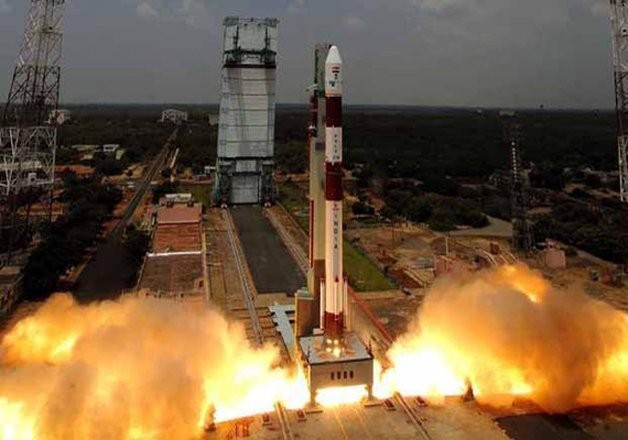
Chennai, March 16 (IANS) The Indian space agency is hoping to mate the country's fourth regional navigation satellite around March 19, after replacing a faulty transmitter on Monday, said a senior official.
"The new transmitter is expected to be fixed in the satellite and tested. Then the fully assembled satellite will be mated with the rocket," M.Y.S. Prasad, director of Satish Dhawan Space Centre (SDSC) told IANS over phone.
The transmitter from ISRO Satellite Centre, located in Bangalore and that is part of Indian Space Research Organisation (ISRO), reached SDSC on Sunday.
After mating the satellite with the rocket, a full system check would be carried out and then the rocket launch date would be fixed.
Prasad said if everything goes well then the space agency is planning to launch the rocket towards the end of March.
The 1,425 kg satellite - Indian Regional Navigation Satellite System (IRNSS-1D) - was supposed to be launched on the evening of March 9 by an Indian rocket called Polar Satellite Launch Vehicle (PSLV-XL).
The ISRO on March 4, however, deferred the launch after it found one of the telemetry transmitters in the IRNSS-1D not working properly.
Subsequently, the satellite was dismounted from the rocket to attend to the technical glitch.
It is the first time in ISRO's history that a satellite had to be dismounted from a rocket due to a problem in it.
Prior to this incident, satellites have been dismounted from a rocket but due to other problems.
India has so far launched three regional navigational satellites as part of a constellation of seven satellites to provide accurate position information service to users across the country and the region, extending up to an area of 1,500km.
Though the full system comprises nine satellites - seven in orbit and two on the ground as stand-by - the navigation services could be made operational with four satellites, ISRO officials had said.
Each satellite costs around Rs.150 crore and the PSLV-XL version rocket costs around Rs.130 crore. The seven rockets would involve an outlay of around Rs.910 crore.
The entire IRNSS constellation of seven satellites is planned to be completed by 2015.
The first satellite IRNSS-1A was launched in July 2013, the second IRNSS-1B in April 2014 and the third on October 16, 2014.
Once the regional navigation system is in place, India need not be dependent on other platforms.
Most of the states of North India are in the grip of severe heat and heatwave. The first week of
Shamshera Poster: Ranbir Kapoor's look in the film 'Shamshera' is quite creepy! did you see
Ranbir Kapoor, Vaani Kapoor, and Sanjay Dutt starrer 'Shamshera' is one of the much-awaited films
Indore Temple Accident: I had gone to worship with my mother and Veda (younger sister). Everyone
This time in the winter session of Parliament, there was a lot of commotion between the ruling pa
Bollywood singer Mika Singh has been in a lot of discussions about his marriage for the past few
India is a major trading partner of the US. Last year, trade between the two countries was around
Meghalaya deputy speaker quits ahead of floor test against speaker
Shillong, March 23 (IANS) Meghalaya Deputy Speaker and Na
James Bond ditches formals for latest film poster
Los Angeles, March 18 (IANS) Sony and EON productions revealed a new teaser poster for the upco
Indian team's wicketkeeper-batsman Ishan Kishan returned to playing competitive cricket after 3 m
The Indian team has overcome the big hurdle of New Zealand in the World Cup. It defeated the Kiwi